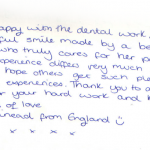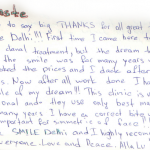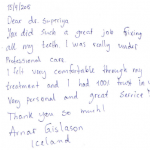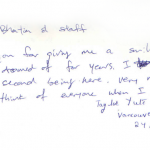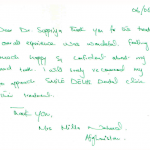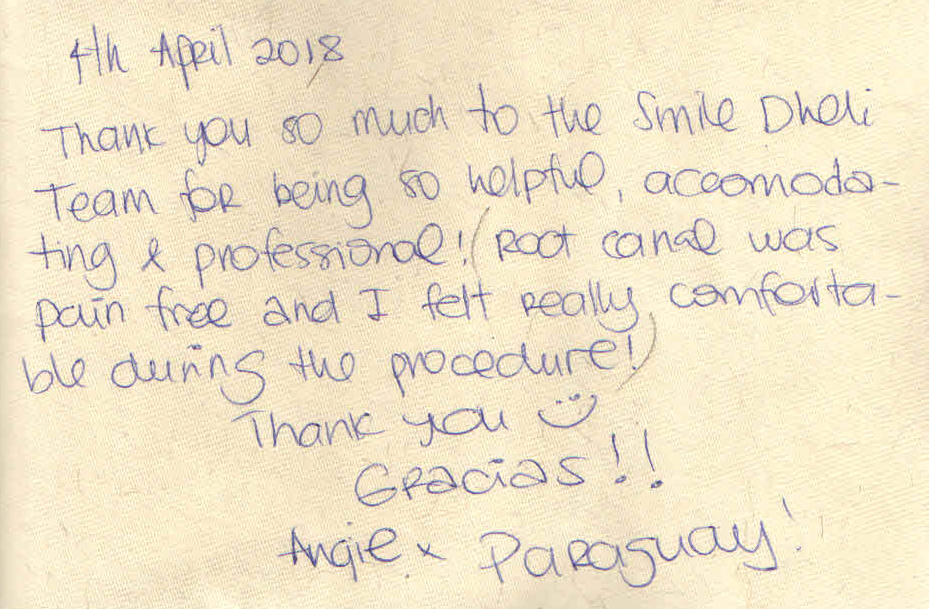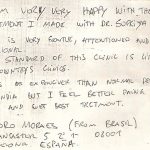This Is Why Gums Receed
Gum recession is a common dental problem that occurs gradually, so most people don’t realize they have it.
This is a serious consequence of poor oral health, due to which teeth can become loose or may lead to tooth loss.
It is the process in which the margin of the gum tissue that surrounds the teeth wears away or pulls back, exposing more of the tooth or the root surfaces of your teeth.
Receding gums are responsible for about 70 percent of adult tooth loss. When there is not enough gum tissue to hold tooth roots in place, the teeth are vulnerable to falling out.
Periodontal disease, a progressed form of gum disease is a common cause of gum recession. It first starts off with a buildup of bacteria and plaque within the gums and the teeth. Over time, this buildup of plaque damages the gums and causes them to fall back from the teeth. When it occurs, “pockets” or gaps form between the teeth and gums. This creates a breeding ground for even more bacteria and plaque to form.
Such teeth are at risk for decay, infection, and loss. The first sign of receding gums is usually tooth sensitivity, or you may notice that your teeth appear longer or the spaces in between them appear bigger at the base.
Gum recession might occur very slowly, sometimes over a period of years.
Treatment can stop or reverse the process of gum recession if begun at an early stage. Dentists in India help to suggest you some measures for treatment or extra oral health hygiene measures to help stop the recession.
Poor oral hygiene and periodontal disease are linked to gingival recession. But receding gums can happen in people with good standards of oral hygiene, too.
When receding gums are caused by over-brushing, the teeth and gums otherwise appear healthy but often affects the left side more. This is because most people use a toothbrush in their right hand and so put more pressure on the left gums.
Even if you don’t experience any symptoms, a dentist can identify early signs of gum disease. One of the best tools for preventing receding gums is to see a dentist regularly and by practicing smart oral health habits.
As gum problems remain silent for a long time, dentists in Delhi remind their patients to come for a six monthly check and clean.
What Causes Gum Recession?
- Overly aggressive brushing- By brushing your teeth too vigorously, you can wear away the enamel on your teeth, and your gums will start to recede. Vigorous tooth brushing or use of hard bristles can damage the gums and lead to gum tissue trauma. Always use a soft or extra soft toothbrush and be gentle but thorough.
- Genetics- Like the rest of your body, your gums’ characteristics are also determined by your genetics. If receding gums run in your family, you are simply more susceptible to it.
- Abnormal tooth positioning – Teeth not aligning properly can cause too much pressure on gums leading to recession.
- Grinding your teeth – Teeth grinding can cause a number of dental problems, whether you do it when you are awake or sleeping, far beyond just gum issues. Grinding and clenching teeth, often due to stress, can put extra pressure on the gums. By putting too much unnecessary force on your teeth you can cause the gums to recede.
- Insufficient dental care – This is the most common cause of receding gums. Inadequate brushing and flossing habits will lead to excessive accumulations of plaque and tartar on and between your teeth. The buildup of plaque and tartar irritates the gums and can cause them to recede.
- Smoking and tobacco products – Habitual users have increased amounts of tooth plaque which can cause recession.
- Hormonal changes – For women who experience hormonal fluctuations, especially during pregnancy or menopause, their gums can become more inflamed and hence more vulnerable to receding gums.
- Accelerated orthodontic treatment – By moving the teeth too quickly during an orthodontic treatment, the gums can start to recede, due to the body’s inability to adjust to rapid tooth movement.
You also don’t have to wait for a dentist to detect signs of receding gums. If something in your mouth doesn’t look or feel right, give your dentist a call right away. You may be able to treat gum disease (gingivitis) before it progresses into receding gums.
In dental clinics in India, patients are being educated about the importance of and that all the bacteria enter the body through the gums, creating problems in the body.
Treatment for receding gums
First, your dentist will determine what factors are contributing to the recession, so they can be lessened or, if possible, eliminated.
For instance, you can straighten crooked teeth, curb tobacco use, and practice better dental hygiene.
Once these factors are addressed, different treatments can be used to enhance and restore the appearance of your gums. Those treatments include:
- Desensitizing agents, varnishes, and dentine bonding agents- These aim to reduce any sensitivity that may develop in the exposed tooth root. This treats the nerve symptoms and helps to keep normal oral hygiene by allowing brushing of sensitive teeth to continue
- Composite restoration- Tooth-colored composite resins are used to cover the root surface.
- Orthodontics- Treatments designed to move the position of teeth can correct the gum margin.
- Deep Cleaning- Gums can recover from mild gum recession with the help of a thorough professional dental cleaning session. This may involve ultrasonic and manual tooth scaling or root planning to remove plaque and tartar and to stop it building up again.
Advanced cases of receding gums will likely require surgery to prevent further damage. Dentists in Delhi and dentists in India, have been providing quality treatment to control the progression of gum disease (periodontal disease) to advanced stages.
- Pocket depth reduction- Pockets between the gum and teeth allow bacteria to build up. In this procedure, the gum is folded back and infected tissue removed before securing the healthy gum tissue back over the root of the tooth. Sometimes the teeth appear even longer after flap surgery because the gums fit more closely around them.
- Gum Grafting- This involves taking the patient’s own healthy gum tissue from the roof of the mouth or using a gum grafting material to replace the missing gum tissue.
- Regeneration- In severe cases of gum recession, the bone may be destroyed. Recent advances in dentistry allow the dentist to conduct a surgical procedure where a regenerative material is placed in the area of bone loss to help regenerate the bone and tissue. The gum tissue is then secured in that area where one or more teeth may have been involved.
It’s important to note that this process cannot be successful over the long term without proper oral health care.
The sure-fire way to prevent gum recession is to take good care of your teeth by brushing everyday using a soft-bristled toothbrush always and visiting your dentist for regular cleanings and checkups. By following these simple guidelines, you will enjoy a healthy smile for years to come.
Posted by- Dr Shriya






